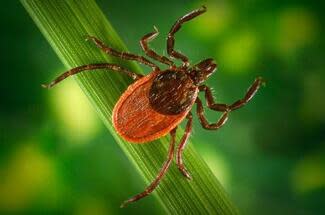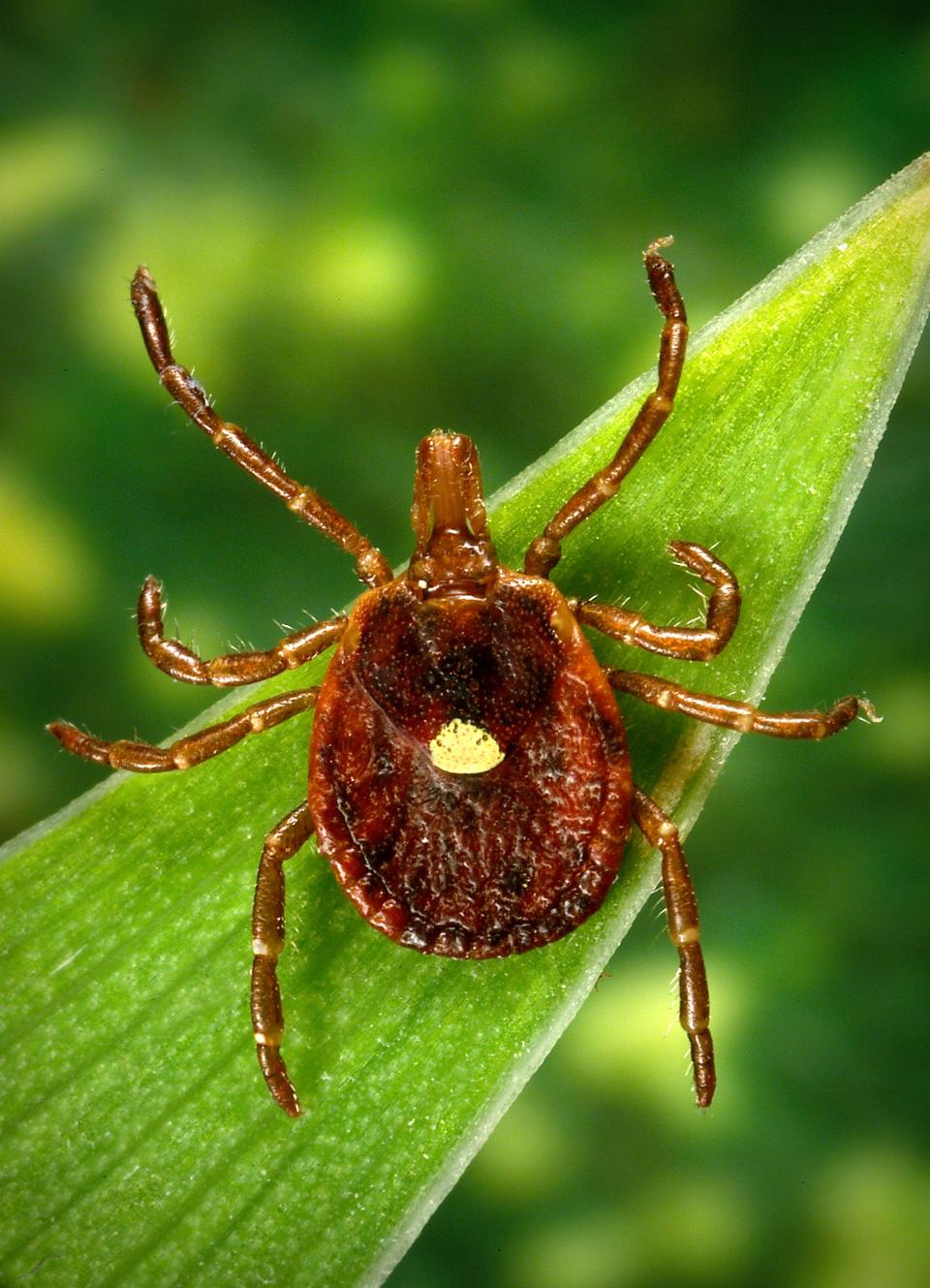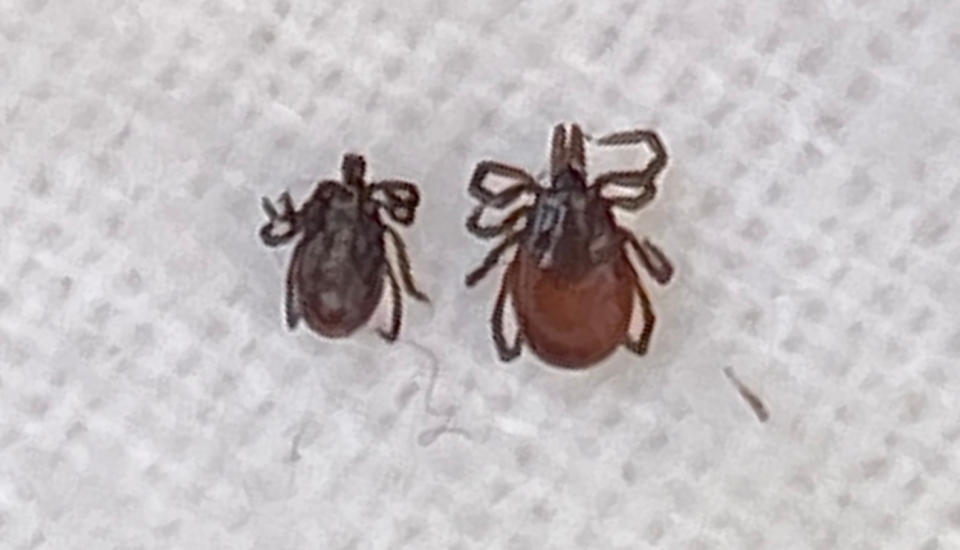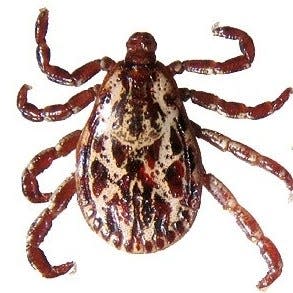Tick talk: Expert tips for removing, avoiding and identifying ticks in the Valley
David Gaines is an expert when it comes to ticks. When he's not investigating insects throughout the state, he's spending time at his farm. Since moving to Virginia in 1988, Gaines has been bitten by ticks more times than he can recall. Working as the state’s public health entomologist in charge of surveillance and investigation at the Virginia Department of Health, Gaines knows his bugs.
Each year, The News Leader checks in with Gaines to share information with the community about ticks in the Valley. Occasionally, answers were lightly edited for clarity or to reduce redundancy.
What is your favorite tool for removing ticks?
Gaines: I would definitely say that pointy headed tweezers are the best tool available.
That is because they allow persons to firmly grasp the head/mouthparts of the tick, as close to the skin as possible before pulling it out of your skin. Without pointy tweezers, one may end up ripping the tick’s body off of its head, and leaving the tick’s head or mouthparts still embedded in your skin. This also may cause the fluids from the ripped tick’s body to contaminate the bite site.
What about other types of tick removal tools?
Gaines: Regarding those tick removal tools with a wedge shaped groove cut into the removal tool, those might work OK if used carefully to remove a large engorged adult stage tick, but they are useless for removing the tiny nymph stage blacklegged ticks or lone star ticks that become attached to your skin, because those ticks are so small that they easily slip right through the groove on the tool.
Furthermore, the nymph stage of the blacklegged and lone star tick species are what cause at least half of the infectious tick bites affecting people.
What types of ticks bite people?
Gaines: Although there are about 16 different tick species that occur in Virginia, it is mainly the lone star ticks and the blacklegged ticks that cause bites to people.
In spite of the fact that I own some farmland in Virginia, I tend to spend a lot of time outdoors in field and forest environments, and I have done a lot of hiking and camping in the mountain regions of Virginia where blacklegged ticks predominate. To my knowledge, I have never yet been bitten by a blacklegged tick.
Take note: Blacklegged ticks, the ones that transmit Lyme disease, rarely swarm a person in numbers, said Gaines.

However, since becoming a resident of Virginia in 1988, I have experienced more bites by lone star ticks than I can recall. Lone star ticks, which are, by far, the most common cause of human tick bites in regions of Virginia that are below 1,500 ft. elevation.
Take note: According to the Virginia Dept. of Health, the adult female lone star tick is best recognized by a white dot, or “lone star,” on the center of her back. Blacklegged male ticks are dark brown or black in color and resemble a small watermelon seed. Females are red-brown behind their black scutum (shield) that is just behind their head (on the tick’s back).

What types of ticks cause disease?
Gaines: The blacklegged tick is mainly associated with the transmission of Lyme disease to people, but can also transmit Babesiosis, Anaplasmosis, Borrelia miyamotoi relapsing fever, and the Powassan virus to people.
Lone star ticks are mainly associated with the transmission of several types of Ehrlichiosis to people, but can also transmit the “southern-Tick Associated Rash Illness”, Rickettsia parkeri disease, Rocky Mountain Spotted Fever, Tularemia and the Heartland virus to people.
Although American dog ticks also occasionally bite people, and are also associated with the transmission of Rocky Mountain Spotted Fever and Tularemia, their bites of people appear to be much less common than the bites by the first two tick species.
Ticks in the Shenandoah Valley
Gaines: As the highest elevation within the valley is near Staunton at 1,700 ft., I would expect to find a fairly even balance of Lone star ticks and blacklegged ticks in the forest environments that occur there.
From past experience, I have found that lone star ticks and blacklegged ticks are equally common at about 1,600 ft. elevation and that blacklegged ticks become predominant and lone star ticks become rare at elevations of about 2,000 ft. In the highlands of southwestern Virginia, which are mostly above 2,000 ft elevation, blacklegged ticks predominate, but lone star ticks can occasionally be found in places as high as 2,000 ft, if those places are next to stream valleys that descend to lower elevations. We think that the deer populations that transit up and down those stream valleys may carry lone star ticks up to higher elevation zones, and carry blacklegged ticks down to lower elevation zones along those stream valleys.

However, the lone star ticks are not very tolerant of the cold winter temperatures that occur up at 2,000 ft. elevation, and the blacklegged ticks are not very tolerant of the high summer temperatures that occur at much lower elevations.
Although Virginia has had southern variant blacklegged ticks, you should note that the blacklegged tick variant that is known to transmit Lyme disease to people is a “northern variant blacklegged tick” whose populations expanded southwards out of New England, New York, New Jersey and Pennsylvania and began to arrive in Virginia about 30 years ago. This geographic expansion of the northern tick populations was facilitated by the expansion of suburban zones between all the major cities and population centers that range from New England to Virginia.

Blacklegged ticks rely very much on deer as a place where adult male and female blacklegged ticks meet to mate, and where the mated females obtain a large meal of deer blood to nourish the many thousands of eggs that they lay. As deer populations are very difficult to control in suburban forests (deer hunting activities may pose a risk to the nearby suburbanites), most of the Lyme disease cases counted in Virginia have occurred in the people that reside in forested suburban areas of northern Virginia and the Piedmont region. Therefore, although blacklegged ticks are most common and comfortable in the cooler northern states, and in the high elevation regions of Virginia, enough of them manage to survive the heat of forested suburban areas of northern Virginia and Virginia’s piedmont region, that Lyme disease has become a problem in these forested suburban regions.
Lone star ticks also rely heavily on deer for their reproduction, so they are also very common in suburbanized forests, and like Lyme disease, cases of ehrlichiosis are mostly concentrated around the suburbanized zones of Virginia.
Gaines plans to survey some sites in the Shenandoah Valley this summer. We will check in with him again to see what he has found. Visit the Virginia Department of Health's tick identification webpage for more information.
TICKS – DIAGNOSIS & PREVENTION TIPS: An open field is fair game for the Asian longhorned tick.
TICK-BORNE DISEASES: Ticks: How to battle these bloodsuckers
This article originally appeared on Staunton News Leader: Tick talk: Expert tips for removing, avoiding and identifying ticks in the Valley

